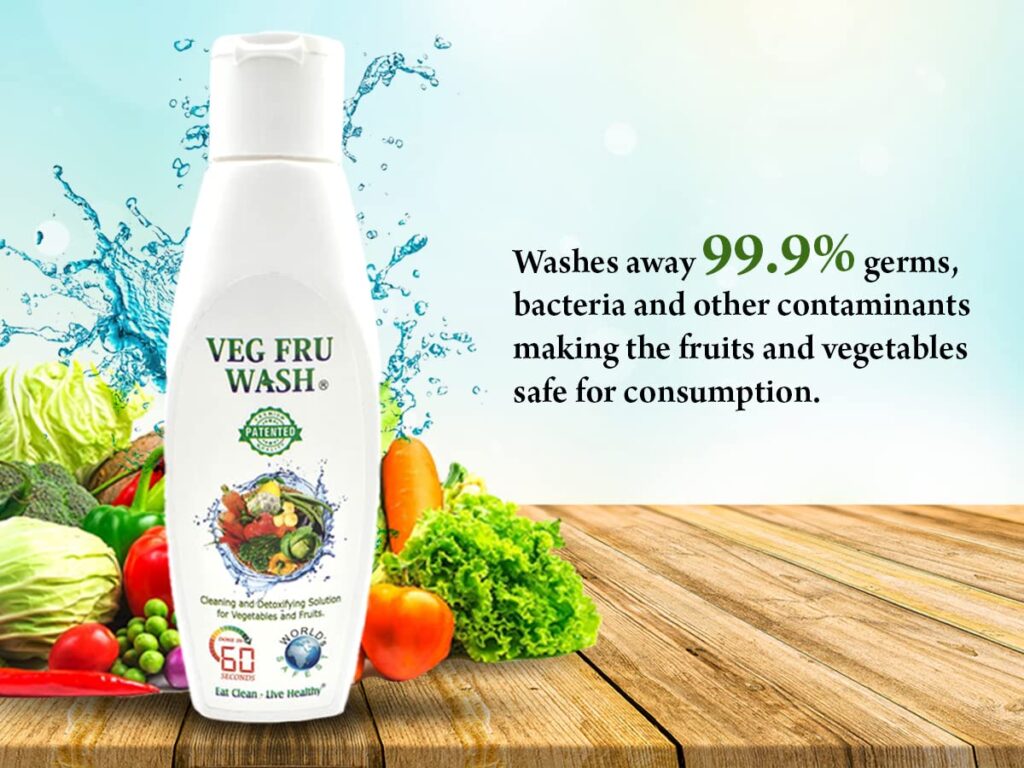
Eating a diet rich in fruits and vegetables is essential for good health. However, these foods can carry pesticides, bacteria, and dirt, making it important to clean them properly before consumption. A vegetable and fruit cleaning liquid can be an invaluable tool in this regard, ensuring that your produce is safe and healthy to eat. This blog will explore the reasons for using a cleaning liquid, its benefits, proper usage, and tips for cleaning various types of produce.
Why Use a Vegetable and Fruit Cleaning Liquid?
- Pesticide Residue Removal: Pesticides are used extensively in farming to protect crops from pests and diseases. These chemicals can leave residues on fruits and vegetables, which can be harmful if ingested. A cleaning liquid is specifically designed to break down and remove these pesticide residues more effectively than water alone.
- Bacterial Contamination: Produce can be contaminated with harmful bacteria such as E. coli, Salmonella, and Listeria during harvesting, transportation, and storage. These pathogens can cause serious foodborne illnesses. Using a cleaning liquid helps eliminate these bacteria, ensuring that your produce is safe to eat.
- Wax and Dirt Removal: Many fruits and vegetables are coated with a layer of wax to preserve freshness and improve appearance. This wax can trap dirt and bacteria. A cleaning liquid can dissolve this wax, making it easier to rinse away contaminants and ensuring that your produce is clean and safe.
Benefits of Using a Vegetable and Fruit Cleaning Liquid
- Enhanced Cleaning Power: Compared to rinsing with water alone, a dedicated cleaning liquid is specifically formulated to penetrate and remove a wider range of contaminants, including pesticides, bacteria, wax, and dirt. This thorough cleaning ensures that your produce is safe and healthy to eat.
- Better Taste and Texture: Clean produce not only tastes better but also has a more appealing texture. By removing contaminants, a cleaning liquid helps you fully enjoy the natural flavors and textures of your fruits and vegetables.
- Health Assurance: Knowing that your fruits and vegetables are thoroughly cleaned provides peace of mind. You can feel confident that you are minimizing the risk of exposure to harmful substances and providing safe, nutritious food for your family.
How to Use a Vegetable and Fruit Cleaning Liquid Effectively
- Read the Instructions: Each cleaning liquid may have specific instructions for use. Follow the guidelines provided by the manufacturer to ensure optimal results.
- Dilute as Directed: If the cleaning liquid needs to be diluted, use the recommended amount of water. Using too much or too little can affect the effectiveness of the wash.
- Soak and Scrub: For produce with tough skins, such as apples, potatoes, and carrots, soak them in the cleaning solution for a few minutes and then scrub with a vegetable brush. This helps remove stubborn dirt and contaminants.
- Rinse Thoroughly: After using the cleaning liquid, rinse the produce thoroughly under cold running water. This helps remove any remaining residues from the cleaning solution, ensuring that your fruits and vegetables are safe to eat.
- Dry Properly: After washing and rinsing, dry your produce with a clean cloth or paper towel. This step helps remove any lingering bacteria and reduces moisture that can promote bacterial growth during storage.
Specific Tips for Different Types of Produce
- Leafy Greens: Separate the leaves and rinse them individually after soaking in the cleaning solution. This ensures that all parts of the greens are thoroughly cleaned.
